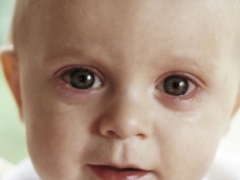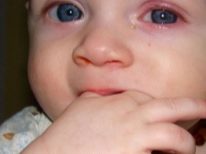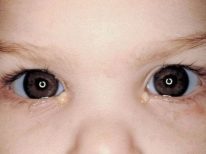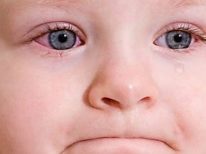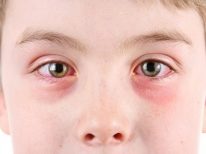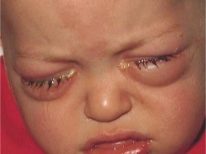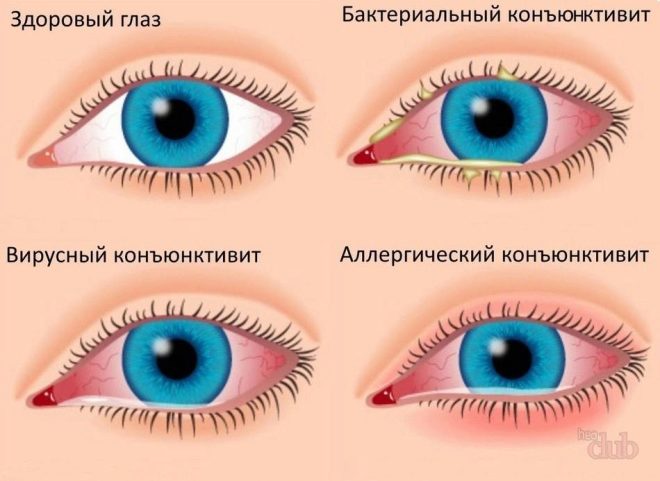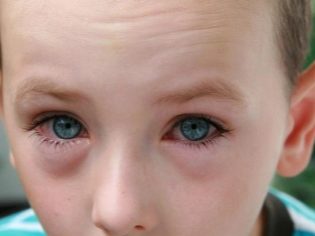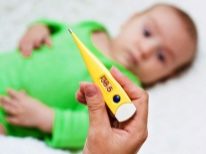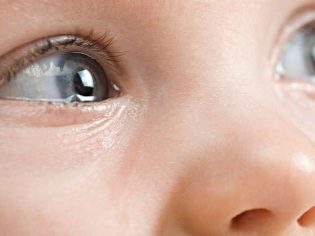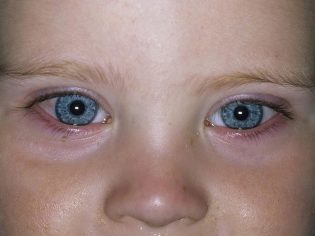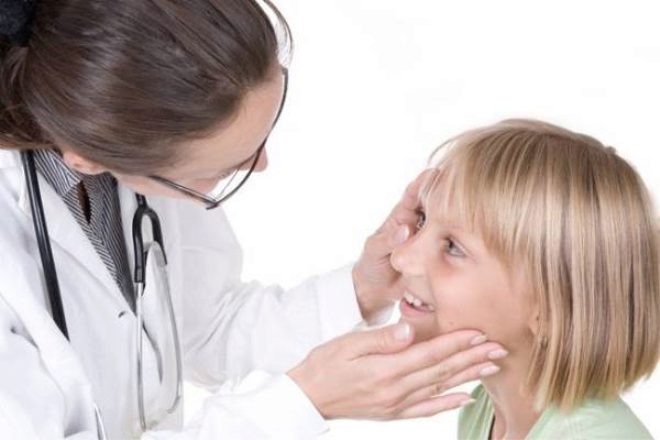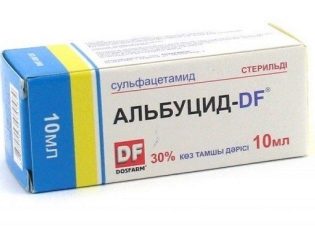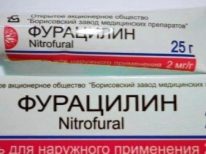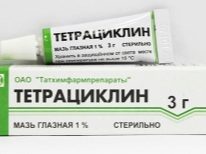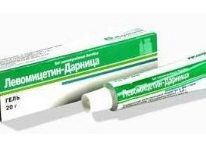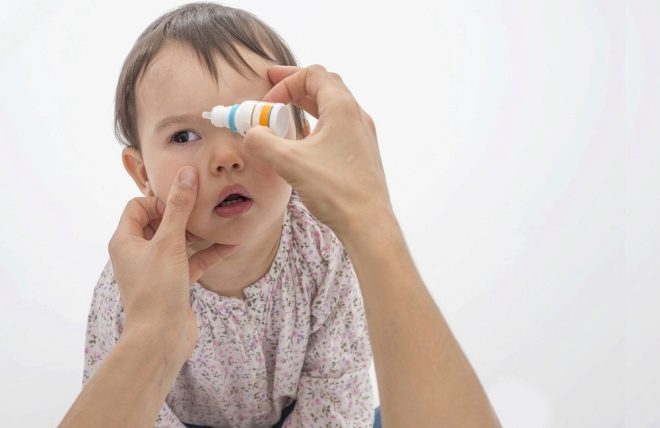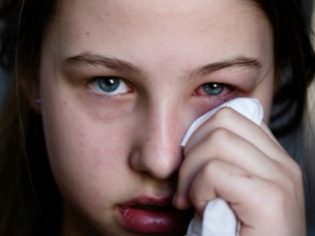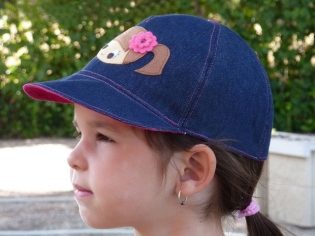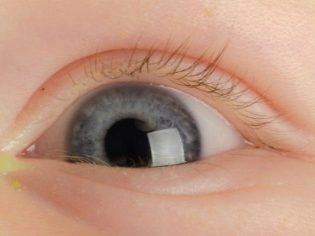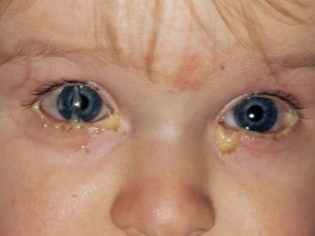Conjunctivitis in children
Younger babies have conjunctivitis very often. Scientists have more than a hundred reasons that lead to its development. Conjunctivitis is considered quite a serious disease. With late treatment, the baby may have dangerous complications.
What is it?
Conjunctivitis is a disease that is included in the international classification of the disease ICD-10. This disease affects both eyes more often. In about a third of cases, inflammation can only be unilateral. In the statistics of diseases conjunctivitis occupies a leading place among other diseases of the eye and visual apparatus.
This disease is caused by inflammation of the mucous membrane of the eye. After exposure to external factors, inflammation starts in the eye, so the disease begins. The disease very quickly captures the entire mucous membrane.
In more severe cases, if the correct treatment was not prescribed, the process may even go into the inner sphere of the eye or cause inflammation in the brain.
Most often, the disease is quite mild. Purulent conjunctivitis, accompanied by the expiration of pus from the eye, are much less common. Often they are caused by bacteria. Much less often the purulent version of the disease is provoked by viruses.
Causes
Conjunctivitis can be caused by a variety of external agents.. Modern science divides all the factors that trigger the disease into several categories:
- Bacterial. In this case, the source of the disease are harmful bacteria. Getting on the mucous membrane of the eye, they cause severe inflammation. Bacterial conjunctivitis is quite difficult. Babies may even have purulent variants of the course of the disease. For treatment requires the appointment of special antibacterial agents.
- Viral. Ranked first in frequency among other variants of conjunctivitis. There are every second child who turns to the doctor with suspected inflammation of the mucous membrane of the eye. The disease often proceeds without pus. This variant is characterized by a strong tearing. On average, the disease lasts 10-14 days. The treatment requires the appointment of special antiviral drugs in the form of drops for the eyes, and in severe cases even tablets.
- Allergic. If the child has allergies, conjunctivitis is also quite common. In this case, the baby has all the signs of an allergic reaction: the body temperature rises, itchy elements appear on the skin, and congestion may occur during breathing. The behavior of the child is changing. Kids become less active, drowsy. Younger children may be capricious and refuse to eat.
- Traumatic. A child may inadvertently injure himself in ordinary daily life. Kids up to three years old are actively learning the world. Taste or touch everything - their favorite activities. If a foreign substance enters the eye, damage to the mucous membrane may occur and severe inflammation begins. In this case, on an emergency basis, you need to show the child to an ophthalmologist.
- Chemical. If various liquids or substances enter the eye, inflammation may also begin. The most common cause of chemical conjunctivitis is the ingress of household chemicals. In some babies, such inflammation may occur after bathing with shampoo. Shower gel or gel, getting into the eyes, can provoke conjunctivitis.
- Conjunctivitis, which are found in other diseases. Most often they occur in babies with chronic inflammatory diseases of the ear. Exacerbation of otitis, sinusitis and other diseases of the upper respiratory tract provokes inflammation in the mucous membrane of the eye. This is due to the close proximity of the organs to each other, as well as blood supply from the same blood vessels. In such cases, before treating conjunctivitis, the exacerbation of a chronic disease that caused the inflammatory process should be cured first.
- Congenital conjunctivitis. It is quite rare. In this case, the baby is infected in the womb, from the mother. If a pregnant woman gets a viral or bacterial infection during pregnancy, she can easily infect her baby. Viruses and bacteria are of very small size. They easily penetrate the placenta and are quickly spread through the bloodstream throughout the child's body. Once on the mucous membrane of the eye, they also cause conjunctivitis.
Stages of the disease
In any inflammatory process, certain stages are successively replaced:
- Hitting a factor provocateur on the mucous membrane of the eye. This can happen in several ways. Most often with direct contact or with blood flow. Getting on the mucous membrane, the foreign agent acts on the cells and triggers inflammation.
- The development of the main clinical symptoms of the disease. The cells of the immune system take an active part in this. After receiving a signal that an alien agent has entered the body, they quickly start their work. By discarding biologically active substances, cells of immune protection try to limit the process only in the cavity of the eye, preventing spread throughout the body. Most conjunctivitis occurs in follicular form, without dangerous complications.
- The recovery process. During this period, all clinical manifestations of the disease gradually begin to fade. Symptoms of inflammation are erased, and the baby is slowly recovering. However, this variant of the course of the disease is characteristic only with favorable development of the disease. Impaired babies or children with low immunity may experience dangerous complications. In order to prevent this, the appointment of special medications is required at the first and second stages.
Incubation period
The time from the moment the bacteria or virus enters the body until the development of the main symptoms of the disease can be different. It depends on which pathogen has become the source of the disease. For most bacterial conjunctivitis incubation period lasts 7-10 days. In some cases, even up to two weeks.
In case of viral variants of the disease, the incubation period is, as a rule, 5-7 days. After this time, the baby becomes contagious, and the disease is easily transmitted from a sick child to a healthy one. Viruses are very small in size and easily spread. If the children attend kindergarten or attend school, then the probability of becoming infected becomes much greater. In crowded teams, doctors note a marked increase in the incidence of conjunctivitis.
How to recognize: the first signs and symptoms
After the incubation period, the second stage of the disease begins. At this time, the disease is already apparent and has all the characteristic symptoms.. Conjunctivitis usually presents with the following symptoms:
- Tearing. The most vivid and classic sign. It occurs in 98% of cases of children.Tearing bothers the baby throughout the day. It decreases slightly at night and after instillation of drops. In the first three days, tearing can be intolerable. As a rule, discharge from the eye is bright. In some cases, it may be bloody or yellow.
- Red eyes. Vessels located on the surface of the eyeball, turn red and become very noticeable when viewed. In children with severe disease redness can be very pronounced. Eyes look tired. In severe cases, the entire white space of the eye around the iris turns red.
- Photophobia. Due to inflammation on the mucous membrane, this rather unpleasant symptom appears. Baby can not open his eyes in the daytime. Bright rays of light cause pain in a child and increase tearing. At night, or when shading a room, babies feel much better.
- Discharge of pus. This feature is optional. Most often it occurs in babies with bacterial conjunctivitis. As a rule, both eyes are affected simultaneously. The discharge of pus occurs throughout the day. In this case, the mandatory appointment of antibacterial drops for the eyes. In severe cases of the disease, doctors may prescribe antibiotics in pills or even injections.
- Increased body temperature. With a mild course of the disease, it increases to 37-37.5 degrees. In more severe cases or when the first complications appear, the temperature rises to 38-39 degrees. The baby's state of health worsens, weakness increases. Children become more capricious, try not to open their eyes. Night and daytime sleep bring temporary relief.
- Feeling of a foreign object or "sand" in the eyes. It is also an important diagnostic sign of conjunctivitis. It occurs in more than 80% of cases.
- Manifestations of an allergic reaction. Occur in case of allergies. In children, the temperature rises, it can be a runny nose or stuffiness when breathing. Children with atopic dermatitis appear itchy red elements on the skin. The child's well-being is getting worse. The baby becomes sluggish, eats badly.
Forms of the disease
A variety of options for the disease can be a huge variety. If the process originated for the first time, then it is called acute. This is the very first case of a particular disease in life. If, after treatment, the disease reappears after some time, then this process is called already chronic.
As a rule, conjunctivitis quite often appear again and again. Exacerbation of the disease in the chronic variant of the disease is called a recurrent process. Conjunctivitis can recur very often. For many babies under 7 years old, exacerbations can occur every year.
Most often conjunctivitis has an infectious cause. Viruses and bacteria top the list of pathogens in the eyes.
However, conjunctivitis may also be chlamydia or fungal of nature. Such variants of the disease occur in weakened children or children with immunodeficiencies.
In babies with low immunity or chronic diseases of internal organs, conjunctivitis may be permanent and protracted. Often, inflammation also occurs within the upper eyelid, making treatment much more difficult.
Diagnostics
Conjunctivitis has a fairly vivid clinical manifestations. To confuse it with other inflammatory diseases of the eye is quite difficult. However, not all babies will have the disease in the classic scenario. Sometimes doctors use auxiliary methods to make a diagnosis.
If the parents notice that the baby has severe tearing or redness of the eye, the child should be taken to an ophthalmologist.Only a doctor with the help of special lamps and devices can make a diagnosis and prescribe the correct treatment.
To identify the causative agent, ophthalmologists may prescribe special laboratory tests. The most common and routine test is a complete blood count. It can show how difficult the disease is and also reveal the cause of the disease. By blood analysis, you can determine which conjunctivitis has occurred - viral or bacterial.
In cases where the disease is not quite normal, additional tests are required. Blood sampling for the determination of antibodies to various infections is also often used in pediatric ophthalmology. With this test, you can identify chlamydia, protozoa and even fungi.
In babies in the early stages of the disease, you can take a tear fluid or discharge from the eye for analysis. In the laboratory, conduct research on the material and determine the cause of the disease.
With bakposeva can not only establish the causative agent of the disease, but also to determine the sensitivity to antibiotics. This will help in the appointment of more effective treatment.
Treatment
Drug therapy for conjunctivitis is prescribed by an ophthalmologist. After examining the child and conducting additional research, he chooses the necessary regimen and combination of drugs.
If the disease is bacterial, the doctor will definitely recommend antibiotics. Among the most common and frequently used drugs are the following:
- «Albucid». It is used in the treatment of conjunctivitis almost from birth. The drug kills various forms of bacteria, including active against staphylococci and streptococci.
- «Levomycetin». Refers to antibacterial agents. It is used to treat bacterial forms of conjunctivitis. It is often prescribed for the discharge of pus or the onset of complications.
- "Furacilin". Suitable for processing and rinsing eyes. Divorced in warm water. The affected eyes are treated with a weak solution 3-4 times a day. It has a detrimental effect on many microorganisms. It has a disinfecting effect.
- «Miramistin». It is a good antiseptic to kill pathogens. It is used to treat acute inflammatory processes, as well as to eliminate the symptoms of exacerbation of chronic. Relatively rarely causes adverse reactions.
- Tetracycline ointment. It is a classic in the treatment of infectious conjunctivitis. Appointed in the acute period of the disease. The use of tetracycline ointment helps to get rid of suppuration, reduces eye redness and prevents the development of possible adverse complications.
Treatment of conjunctivitis is complex and requires the appointment of several drugs. In light variants of the course of the disease, homeopathy may be prescribed. Homeopathic medicines can be used to reduce inflammation (to strengthen the immune system and the rapid recovery of the child's body).
Is taking antibiotics necessary?
Antibiotic prescription is indicated in cases when various bacteria have caused the disease. All bacterial cells are sensitive to antibacterial drugs. Currently, all medicines that have a detrimental effect on bacteria are available in a variety of dosage forms. When treating conjunctivitis, ophthalmologists may prescribe antibiotics in drops or tablets. Rarely appointed ointment.
The use of antibacterial drops is more convenient. Mom can easily use them at home. A course of 7-10 days is usually assigned. In more severe cases, doctors can extend the period to two weeks.
In difficult cases, it is allowed to use a combination of antibacterial agents or choose a drug with a broad spectrum of action.
For how to dig the drug in the eyes of a child, see the following video.
Only a doctor should prescribe an antibiotic. Independent use of drugs of such action is highly undesirable. If antibacterial agents are used improperly, instead of a positive effect and recovery, dangerous complications can occur, and numerous side effects of the drugs can appear.
Cure conjunctivitis in home conditions and without the use of antibiotics is quite possible. It all depends on the cause of the disease. For viral conjunctivitis, antibiotics are not required. After consultation with an ophthalmologist, babies with a slight variant of the disease can be treated at home (under the supervision of a physician).
Infants and newborns are most often hospitalized in the hospital. In such babies, the immune system is still not very effective. This can lead to dangerous complications. The provision of qualified medical care allows you to speed up recovery and prevent the transition of the acute process to the chronic form.
How many days on average are treated?
The duration of conjunctivitis treatment depends on the cause of the disease.
On average, all viral diseases of the eye go away in 5-7 days. For bacterial conjunctivitis characterized by a longer period. Usually the time of illness is 7-10 days. All inflammatory processes caused by fungal flora, take a long time. In some cases, the disease develops during the month.
If a child is weakened or has any chronic diseases of other internal organs, then conjunctivitis may take longer. In weakened children and babies with a reduced level of immunity, the treatment of inflammatory eye disease may take up to a month.
Is it possible to walk?
In the midst of the disease should not go out. It is better to wait a few days to improve well-being. If a child has a fever or pronounced tearing, walking on the street is dangerous enough. The inflamed mucosa is very sensitive to various irritations. The sun's rays can damage the eyes, increase tearing.
After the inflammation subsides, babies can go out. In the first days after the acute period of the disease is better to use sunglasses. For babies or newborns during walks, a pram with a large sun visor is perfect. If the walk with the baby takes place in the summer, be sure to wear a hat with wide brim. Baseball caps that give shade to your face and protect your eyes from bright sunshine will do.
Is it possible to swim?
In the acute period of the disease, babies are not recommended to swim. Especially if the child has a high fever.
When inflammation decreases, babies can swim again. Long stay in the water is not recommended:
- For kids up to five years is enough hygienic bath.
- Older kids better to choose a swim in the shower.
Possible complications
Conjunctivitis in the presence of complications is a rather dangerous disease. Babies may suffer vision. In some cases, after conjunctivitis, there are complications in color perception. In this state, kids confuse colors, do not perceive all the shades of the palette. However, this outcome is quite rare.
The most frequent complications of conjunctivitis include the transition process in a relapsing chronic form or a protracted version of the disease. In this case, the kids need a constant prescription of medicines to eliminate unpleasant symptoms.
Suppuration is also one of the most frequent complications of conjunctivitis. In this case, the disease first proceeds in a rather mild form.
Prevention
Preventive measures help largely prevent the development of inflammatory eye diseases.Infectious conjunctivitis is transmitted from a sick child to a healthy very quickly. In order not to get infected, it is necessary to remember about important preventive measures:
- Use only your own towels. In no case can not wipe the face of foreign textile products. Pathogenic microorganisms often accumulate on the tissue. In a warm and moist bathroom, they multiply very quickly. While wiping the face, bacteria easily penetrate the mucous membrane of the eye and cause inflammation.
- Perform regular hygiene procedures for the eyes. This is especially true for newborns and infants. Wipe your eyes with cotton pads dipped in warm boiled water, you need every morning and before bedtime. If eye irritation or redness occurs, seek medical attention immediately.
- Strengthen immunity. Toddlers who have strong immune defenses are less susceptible to various inflammatory diseases. Proper nutrition, good sleep and fresh air significantly strengthen the immune system and make babies more resistant to various infectious diseases.
- Do not allow mass infection. If a child attends kindergarten or school, when an outbreak of conjunctivitis occurs, it is necessary to protect the baby from visiting. Usually the duration of forced quarantine is 7-10 days.
Performing all preventive measures will help prevent disease. However, it should be remembered that when a baby has tearing or redness of the eye, treat it in home conditions it does not follow. First show the child to an ophthalmologist. He will prescribe the correct therapy, which will help the baby recover quickly. This will prevent the transition from acute to chronic.
For details, see below in the issue of Dr. Komarovsky.
